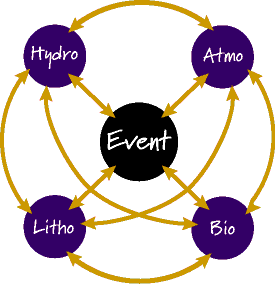Hello everyone. I have posted the complete syllabus of Soil Mechanics here. You can compare this with your
preparation and ensure that you do not miss out anything. I will be posting syllabuses of other subjects as well.
Good Luck everyone.
CE-305 SOIL MECHANICS-I
Nature of Soils: Origin, Formation, Soil minerals, Clay mineralogy, Soil structures, Particle shapes and sizes.
Composition and Phase diagram, water content, void ratio, porosity, degree of saturation,
Physical Properties: specific gravity, unit weights, mass-volume relationships, Formation, structural & physical properties of clay minerals.
Index Properties and Particle size distribution by sieving and sedimentation, In-Place density
Classification Tests: test, relative density, Atterberg’s limits and their determination, plasticity and liquidity index: Sensitivity and Activity of fine soils
Soil Classification Unified soil classification system, M.I.T. system and AASHTO
Systems: classification systems
Water in Soils: Free energy (pressure and heads), Capillarity and its effect on soil behavior, Electro-Osmosis, Darcy’s law, Seepage forces and their effect on soil stability, Design of filters, Factors effecting permeability, Permeability tests, Laplace’s Equation and its solution (Flow Nets), Methods of drainage and dewatering of soils.
Stress Acting in Soils: Soil mass stresses, effective stress and neutral stress, stress at a point and Mohr’s circle, Westergard’s and Boussinesq’s solutions, Pressure distribution in the soil mass resulting from different vertical surface loadings, Newmark’s influence charts.
Shearing Strength of Soils: Basic principle relating to friction between solid bodies, Coulomb’s law, Shear strength parameters, Shearing strength of granular and cohesive soils, Shearing strength tests and their results, effect of strain, rate and drainage conditions on shearing strength.
Compressibility and Mechanics of consolidation, One - dimensional consolidation equation,
Consolidation: coefficient of consolidation, compression index, Consolidation tests and graphical representation of data, Degree of consolidation. Determination of preconsolidation pressure, swelling clays and clay-shale
Soil Compaction: Requirements, principle and methods including standard and modified AASHTO tests.









